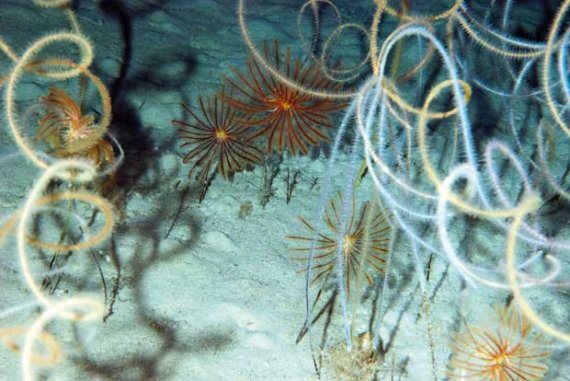What is it like to explore the deep sea around Bonaire in a tiny submarine? Cramped, at any rate. ‘You mustn’t suffer from claustrophobia,’ notes Lisa Becking dryly. ‘And you certainly mustn’t start thinking "What if something goes wrong now?"’ Oh yes, and a good bladder helps because you can’t go to the toilet for six hours. But the main feeling is one of wow! The introduction of the Special Island Status for the Caribbean islands of Bonaire, St. Eustatius en Saba at the end of 2010 gave the Netherlands a lot of interesting additional nature, not just on the islands but – in particular – in the surrounding sea. ‘A huge area, bigger than the Dutch part of the North Sea,’ estimates collegue Erik Meesters. ‘With depths of up to 4000 metres, with nature of great value, the Saba bank and enormous biodiversity.’ These valuable possessions incur obligations. The first Nature Policy Plan for the Caribbean Netherlands has just been issued. But we really know nothing about the state of the natural resources of the Dutch overseas territories. ‘The biodiversity is largely unknown. We don’t even have any good sea-bed maps. This was a preliminary study,’ says Meesters, explaining the goal of the expedition ordered by the Ministry of Economic Affairs.
Apollo mission
The expedition explored the sea bed off the south-west coast of Bonaire. Becking: ‘We started at a depth of two metres and followed the reef downwards. We eventually reached a depth of 250 metres about one kilometre from the coast.’ Cameras were used to film everything and dozens of specimens were collected using two huge gripper arms and a chisel. ‘A kind of DIY chisel attached to the front of the submarine. The most useful tool on board,’ laughs Meesters. ‘The pilot manoeuvres the submarine to the exact spot you are interested in, then accelerates. The submarine becomes a kind of expensive hammer.’ That’s right, the pilot. Because you don’t just get given a submarine. The researchers are merely passengers accompanying a crew of two. Hence the cramped conditions. Meesters: ‘And we are in permanent contact with the boat following us. Evacuation information. Sometimes you feel you are on an Apollo mission. You hear them say "No leaks, no leaks". Which is ridiculous! There is moisture on the walls and you feel the drops on your neck. The condensation from your own breath.’ Disturbed system The data and specimens that were collected are now being examined by taxonomists at Naturalis. The expedition has already discovered at least one new shrimp and two new species of fish. And there is more to come. They also came across enormous fields past the reefs. ‘Red cyanobacterial mats,’ thinks Meesters. ‘Finding them in coral reefs usually indicates a disturbed system,’ explains Becking. ‘But it’s not yet clear what the function is here. We need to investigate further.’ There are already plans for more expeditions. ‘Definitely. We’ve only seen a tiny part of Bonaire. The sea bed off the north-west of the island is much steeper and probably even more interesting. And there are more islands to be explored.’

